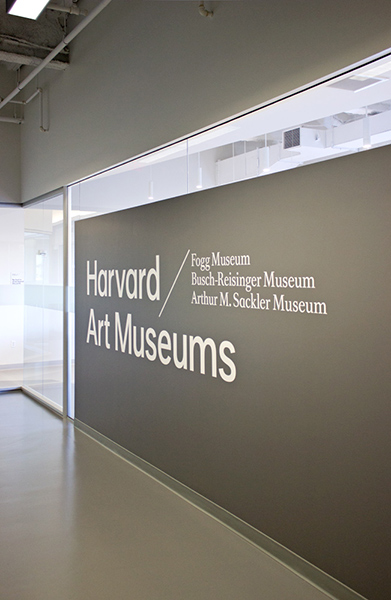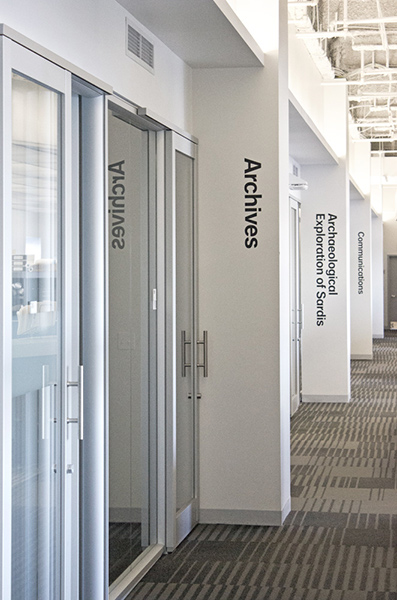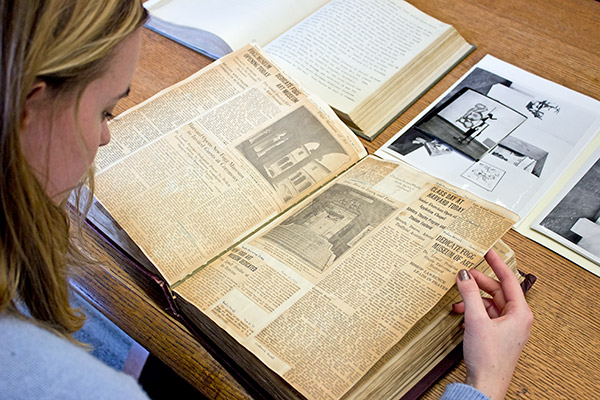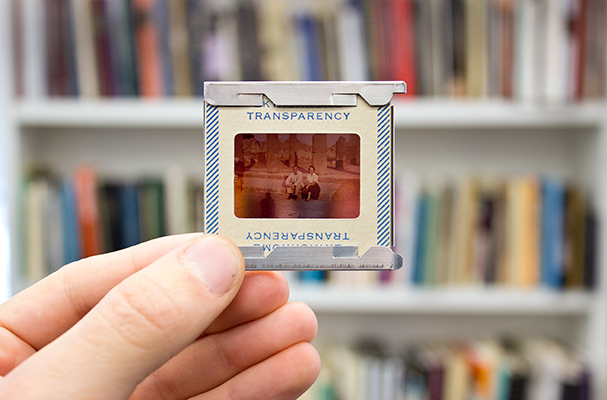Just a few miles from the Harvard Art Museums’ flagship center at 32 Quincy Street, in Cambridge, is another hub of creativity and inquiry. The Somerville Research Facility is home to the museums’ archives, the Archaeological Exploration of Sardis, the Division of Communications, the Department of Digital Imaging and Visual Resources, as well as several key offices related to Collections Management. In addition, a large part of our collections is kept in custom-built storage here and may be viewed upon request in the facility’s Art Study Center.
Originally established as a temporary office for staff—and the museums’ collections—during the renovation and expansion project, the research facility has been in use since 2008. For about six years, many staff members worked from this satellite office, located at 200 Inner Belt Road. When the renovation was completed in late 2014, curators, conservators, and a number of other employees returned to newly designed offices at 32 Quincy Street. Likewise, the staff members of the departments remaining in Somerville moved into freshly renovated, LEED Silver–certified office space.
Employees working in these administrative offices today include Collections Management staff; research and publication specialists from the Archaeological Exploration of Sardis, an ongoing excavation in western Turkey sponsored by the Harvard Art Museums and Cornell University; and marketing and public relations professionals, editors, and designers in the museums’ Division of Communications. The Department of Digital Imaging and Visual Resources, responsible for photographing objects in the collections and processing image permissions (among other tasks), is also based here.
The Somerville Research Facility contains two departments that are open to the public by appointment on weekdays: the museums’ archives and the Art Study Center.
The Harvard Art Museums Archives, the official repository for institutional records and historical documents in all formats relating to the Fogg Museum, the Busch-Reisinger Museum, and the Arthur M. Sackler Museum, serves as a vital center of research for staff, students, faculty, and the public. Its holdings are expansive. They include significant papers of individuals and groups associated with the museums’ history as a teaching and research institution; correspondence, images, and other materials documenting the museums’ collections, exhibitions, spaces, and events; and special collections of personal papers of important donors and museum principals as well as artist papers and gallery records.
The Art Study Center in Somerville is used regularly by staff, faculty, and the public. Harvard classes and individual students make frequent visits to the site to study original works from the museums’ collections. As with the Art Study Center in the museums’ facility at 32 Quincy Street, it allows visitors to request to view objects not currently on display in the galleries, facilitating self-directed teaching and learning from works in all media. Curators and conservators are sometimes present to offer additional context and invaluable perspective.
Given the close proximity of the Somerville Art Study Center and the archives, a visit to 200 Inner Belt Road gives visitors the chance to have a unique and truly immersive research experience. They can view original works of art and then conduct further contextual research in archival records, or vice versa—all in one convenient location.
The Harvard Art Museums Archives are open to the public Monday through Friday, 10am to 4pm, by appointment only.
The Somerville Art Study Center is open to the public during weekday museum hours, by appointment only. (Upon reviewing your Art Study Center request, staff will let you know if the object(s) you are requesting will be shown in Somerville or Cambridge.)







